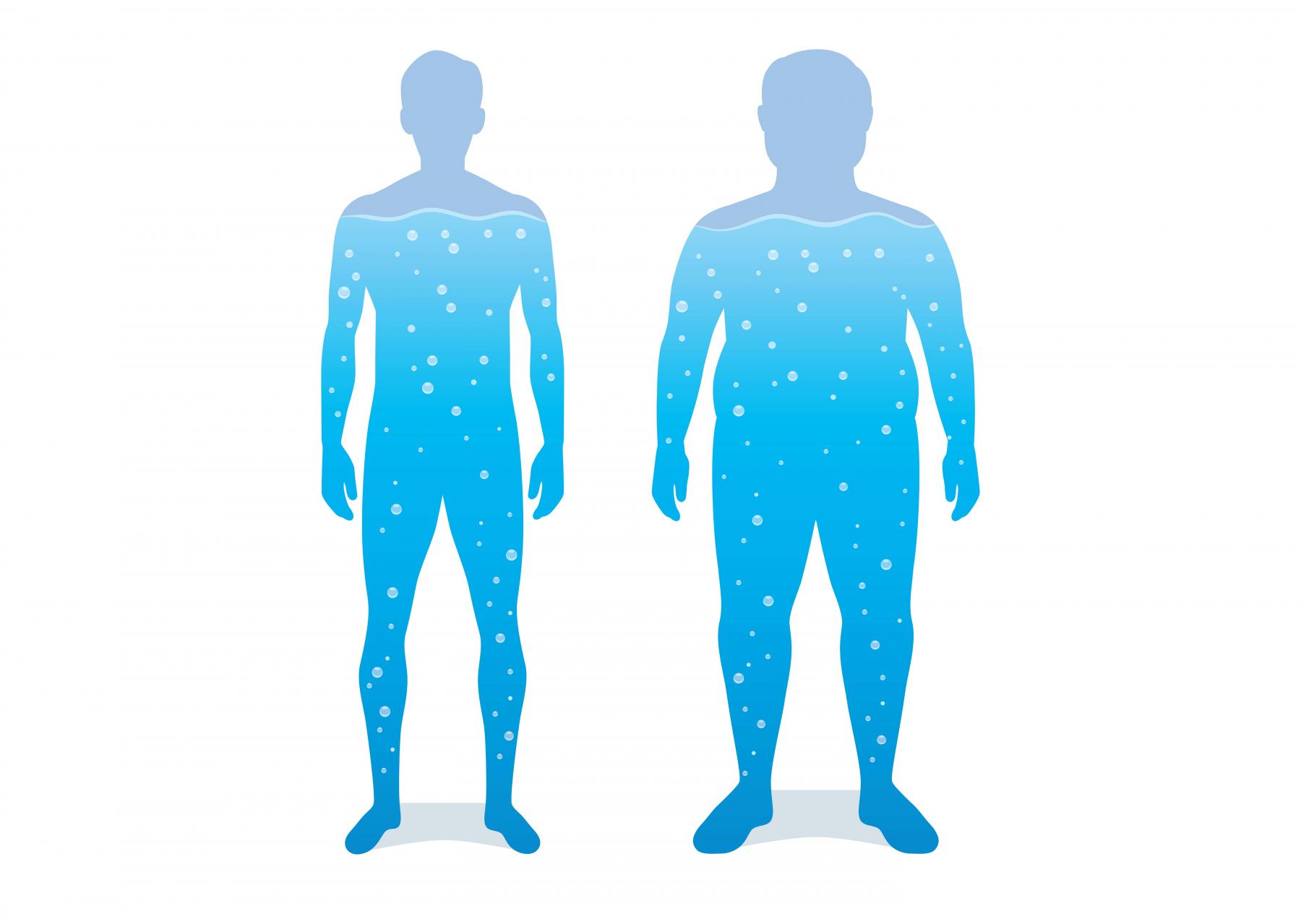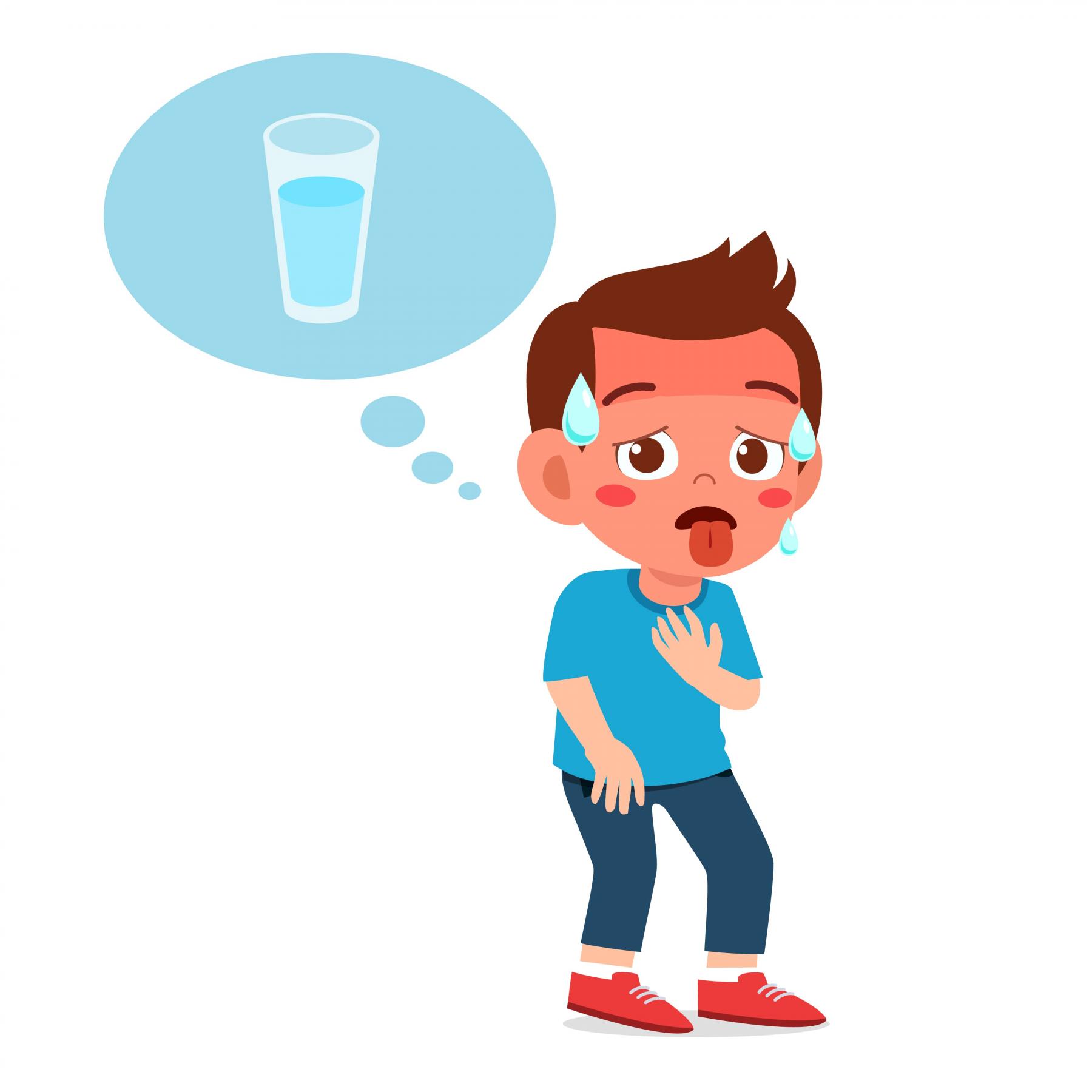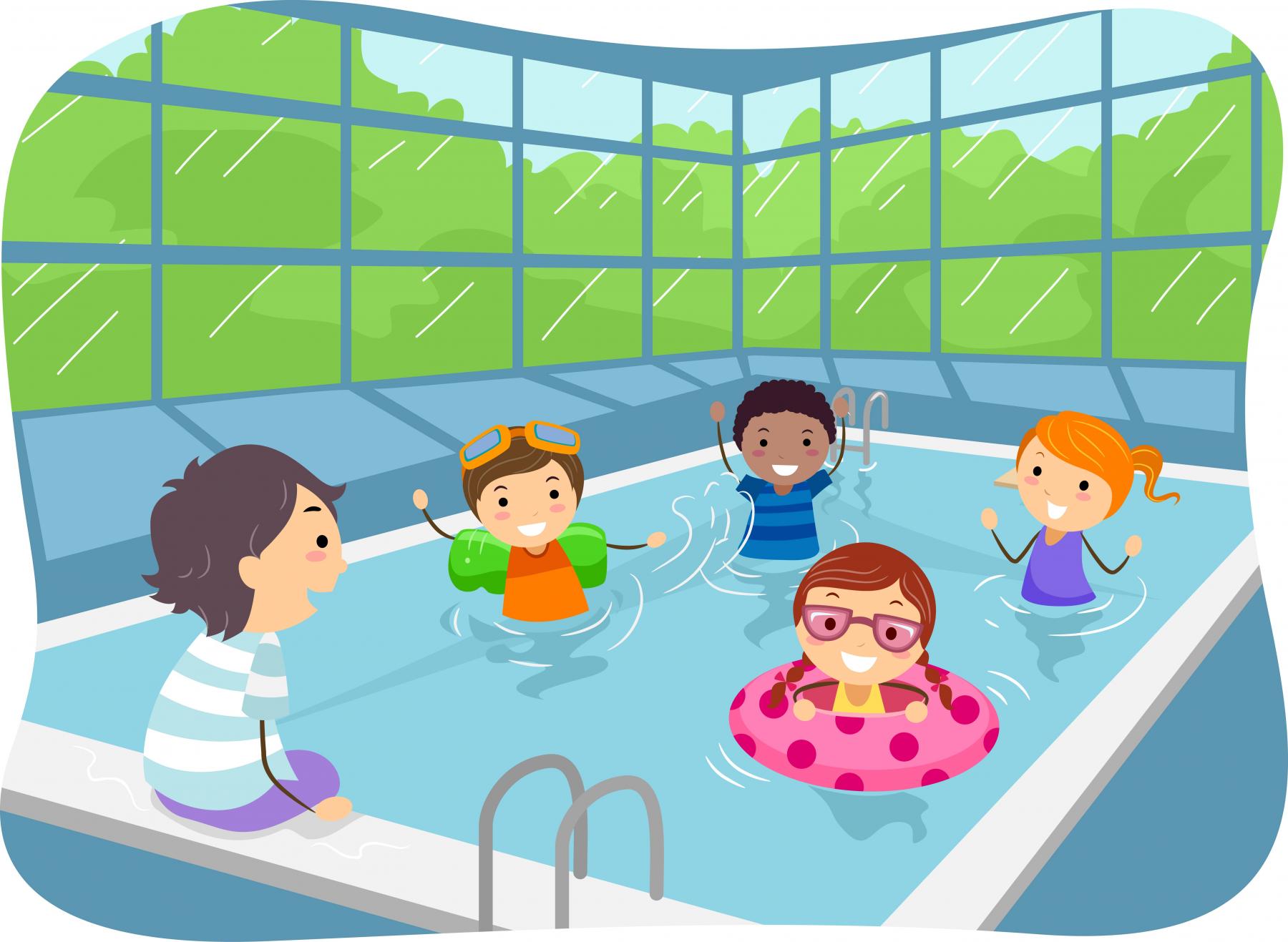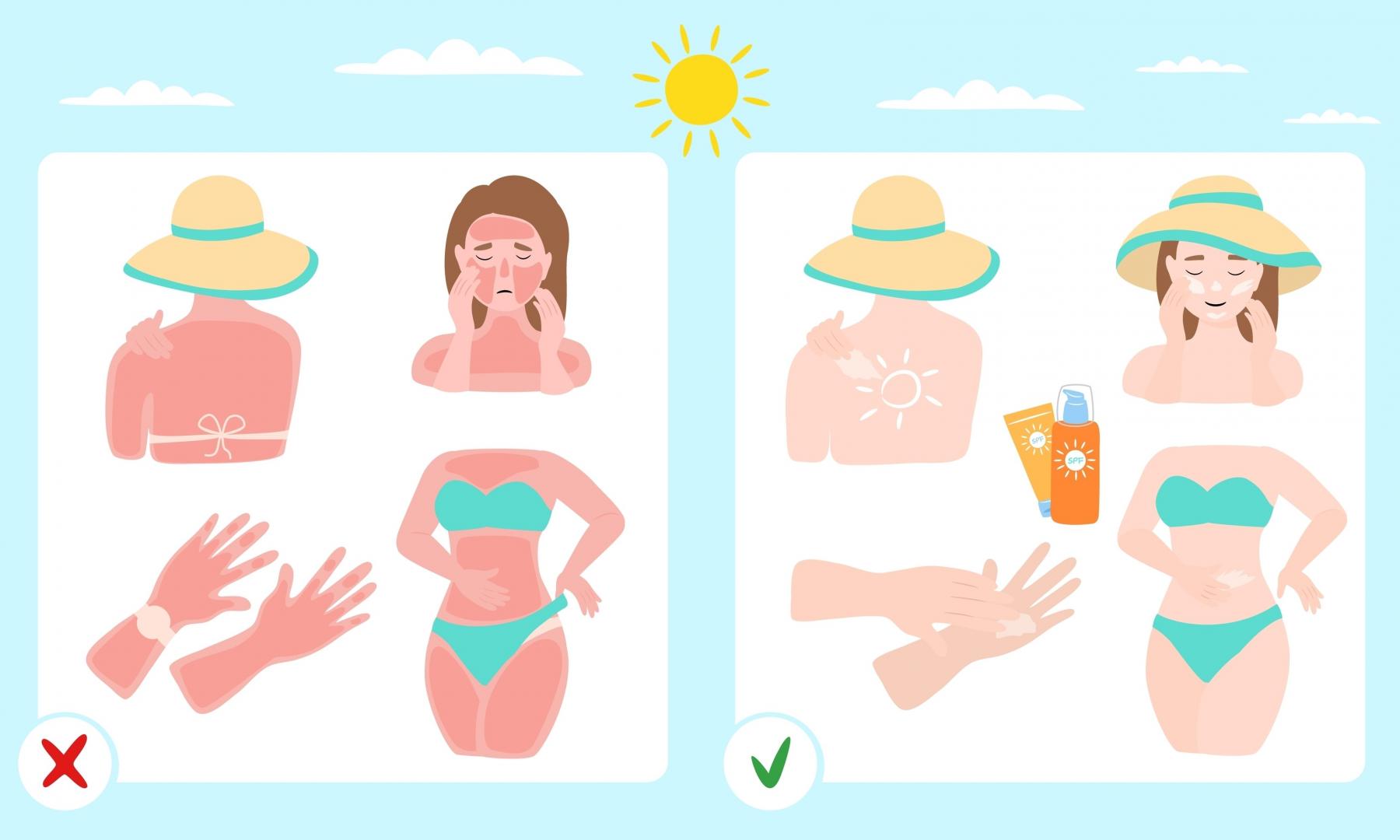Hot weather poses serious health risks, especially when temperatures exceed the body’s comfort zone. Quick action at the first signs of overheating or dehydration is vital. Below is a brief overview of common heat-related conditions and how to respond effectively.
1. Dehydration in summer
Water is a vital component for normal body function and for preventing the body from overheating.

Dehydration is common during hot summer days, especially when you sweat excessively or are ill with fever, diarrhea, or vomiting. It can also result from not drinking enough water or from taking medications that increase urination.
Signs to watch for:
- Feeling thirsty
- Dark yellow, strong-smelling urine
- Urinating less frequently than usual
- Dizziness
- Fatigue
- Dry mouth or lips
In severe cases, dehydration may lead to:
- Sunken eyes
- Confusion
- Rapid heartbeat
If you feel thirsty, drink water immediately. For most people, plain water is enough to rehydrate, though the required amount varies based on body weight, age, activity level, climate, and living environment. If you have heart, lung, or kidney conditions, consult a healthcare professional before adjusting your fluid intake.
If dehydration symptoms don’t improve with self-care, seek medical attention promptly.

It should be noted that sugary drinks, alcohol, caffeinated beverages, and fruit juices are not suitable for preventing dehydration, as they can increase fluid loss through urination. Only those who are physically active or working outdoors for extended periods may benefit from certain sports drinks.
2. Heat cramps in summer
Heat cramps are painful muscle spasms that occur during or after intense physical activity in hot environments.
Heat cramps are painful muscle contractions caused by rising body temperature and loss of electrolytes through sweat. They often affect the legs, abdomen, or arms and can last from a few seconds to 15 minutes. While they usually resolve on their own, cooling down and rehydrating helps relieve symptoms and prevent more serious heat-related illnesses.
Heat cramps are considered a mild form of heat-related illness, often signaling the early stages of heat exhaustion. To relieve heat cramps and reduce discomfort:
- Move to a cool or shaded area.
- Drink a sports drink to replenish electrolytes.
- Gently stretch and massage the affected muscles.
- Rest for a few hours before resuming activity.
If the symptoms of heat cramp persist or worsen, seek medical attention.
3. Heat exhaustion
Heat exhaustion happens when the body overheats after spending too much time in hot environments, especially with dehydration or intense physical activity. The body temperature usually rises to about 38~39°C. This is a warning sign that the body is struggling to cool itself.
Signs to watch for:
- Feeling dizzy or faint
- Headache
- Nausea or vomiting
- Tiredness or weakness
- Muscle cramps
- Heavy sweating
- Fast heartbeat
- Trouble walking steadily
In addition to seeking emergency medical help, immediate first-aid should focus on cooling and rehydration:
- Move the person to a cool, shaded, or air-conditioned area.
- Have them lie down and elevate their legs slightly.
- Remove excess clothing, including shoes and socks.
- Offer cool water or a sports drink to rehydrate.
- Apply a cool, wet cloth or spray the skin with water, then fan to promote cooling.
4. Heatstroke
Heat exhaustion and heatstroke are serious heat-related illnesses, with heatstroke being more severe and potentially life-threatening. Heat exhaustion occurs when the body overheats but can still regulate its temperature. In contrast, heatstroke happens when the body’s temperature control fails, causing dangerously high body temperatures.
Heatstroke is marked by a body temperature above 40°C, leading to profound impairment of both physiological and neurological functions.
Signs to watch for:
- Confusion
- Delirium
- Seizures
- Loss of consciousness
- Hot, dry skin (though this may not always be present, especially in older adults or those with certain medical conditions)
While waiting for emergency medical help, immediate action is critical to prevent serious complications or death:
- Move the person to a cool, shaded area.
- Cool the body as quickly as possible using methods such as spraying with cool water, applying ice packs, or immersing in an ice bath.
- Remove excess clothing, including shoes and socks.
- Monitor body temperature closely.
- If the person is fully conscious and able to swallow, provide cool water or a sports drink.
- If the person is unresponsive and not breathing normally, begin CPR immediately.
5. Heat rash
Heat rash, also known as prickly heat or miliaria, is a common skin condition during hot and humid weather. It is caused by blocked sweat ducts, trapping sweat beneath the skin and leading to inflammation. The rash usually presents with clusters of small red bumps or clear blisters, accompanied by itching or a prickling sensation. Heat rash typically appears on the neck, chest, back, or skin folds, the areas prone to frequent sweating.
Heat rash can affect people of all ages, but it is most common in babies and young children. The rash usually resolves on its own within a few days. However, if it spreads, worsens, or becomes severe, medical attention may be necessary.
To prevent heat rash or help it heal more quickly:
- Stay in a cool, well-ventilated, and less humid environment to reduce sweating.
- Keep the affected area dry.
- Wear loose-fitting cotton clothing and avoid scratchy or irritating fabrics.
- If needed, consult a professional for creams that can relieve itching and inflammation.
6. Sunburn
Sunburn is one of the most common heat-related conditions during the summer season.
It can range from mild redness and discomfort to severe blistering and systemic symptoms such as fever and chills.
Mild sunburn typically heals within a few days, while more severe cases may take several weeks to fully recover. Helpful measures for relief include:
- Apply cool, damp clothes to the affected areas to soothe the skin.
- Drink plenty of water to stay hydrated.
- Use moisturizer containing aloe vera to hydrate and calm the skin.
In general, most heat-related conditions such as dehydration, heat rash, or sunburn are mild and self-limiting, usually be relieved through timely cooling, hydration, and rest. However, if symptoms worsen or severe signs appear such as confusion, high fever, fainting or cramps, it may indicate a serious condition like heat exhaustion or heatstroke, that requires immediate medical attention. Since heat-related illnesses are entirely preventable, proactive measures are far more essential than treating the consequences afterward.






